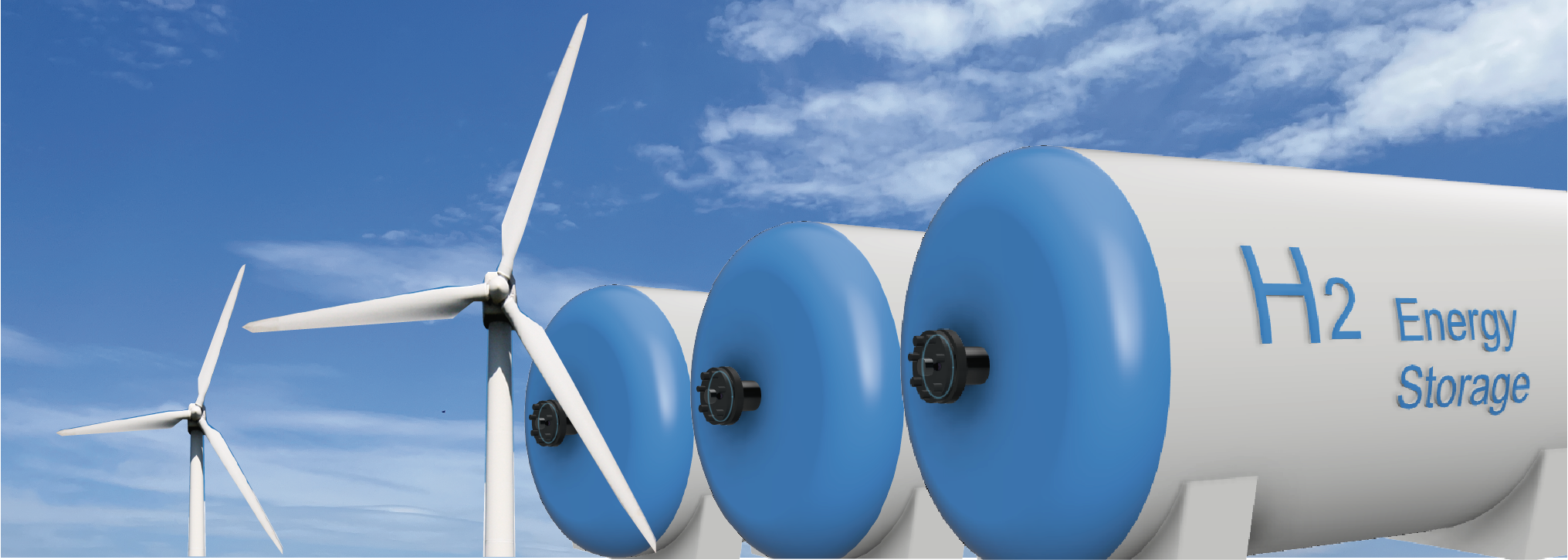Magnesium is a lightweight, eco-friendly, and non-toxic metal. Magnesium alloys are widely applied across the automotive, rail, aerospace, marine, and electronics sectors. China accounts for 70% of the world’s magnesium reserves, making it a global magnesium powerhouse. When talking about magnesium in China, one must mention Chongqing. The International Magnesium Association (IMA), founded in 1943, has so far awarded only three Global Magnesium Technology Awards—all to Chongqing-based teams led by Academician Fusheng Pan of the Chinese Academy of Engineering. In 2022, an ampere-hour-level magnesium-ion battery won the prize. In 2023 and 2024, magnesium-based solid-state hydrogen storage systems and ultra-large integrated die-cast magnesium components received the award again. Why does Chongqing excel in the magnesium field? The story dates back over two decades.
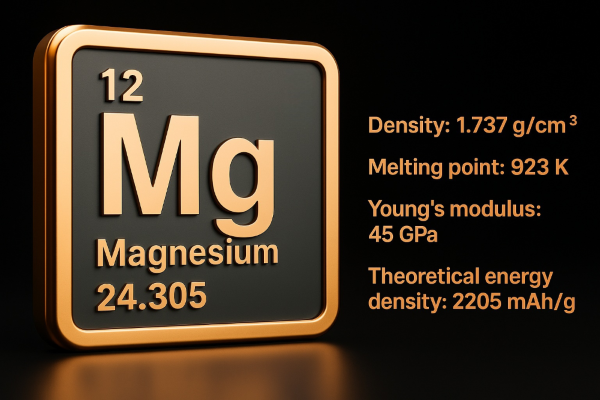
Physical and chemcial properties of Magnesium
In the 1990s, magnesium-related research was still marginalized in China. Magnesium was mainly used in fireworks during holidays. However, amid emerging concerns about environmental pollution and shortages of iron and aluminum resources, prominent academicians like Changxu Shi, Tiejiong Zuo, and Yiyi Li called for the development of the magnesium alloy industry. In response, a group of researchers, led by Pan, began devoting themselves to magnesium. In 2007, with approval from the Ministry of Science and Technology, the National Engineering Research Center for Magnesium Alloys (NERCMA) was established at Chongqing University (CQU), with Pan as director. This marked the foundation of the country’s top magnesium R&D team in Chongqing. In 2017, Pan was elected to the Chinese Academy of Engineering. Under his leadership, magnesium alloys had already been widely used in camping, travel, automobiles, electronics, and aerospace. Multiple countries had elevated magnesium development to the level of national strategy. Thanks to an early start and strong capabilities, NERCMA had by then become the world’s largest magnesium research institute, with over 100 researchers and one of the most advanced platforms for light alloys worldwide.
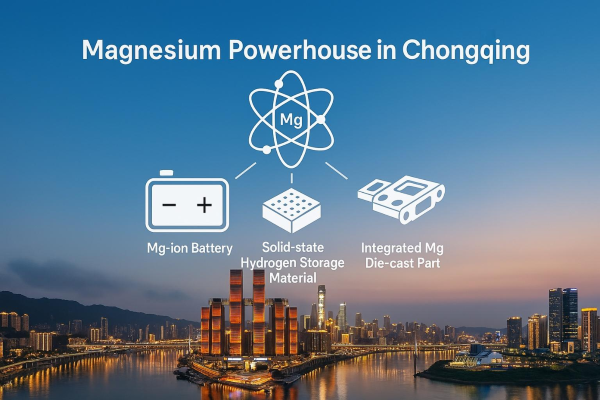
Magnesium powerhouse in Chongqing
In 2022, the Chongqing Institute for New Energy Storage Materials and Equipment (CINESME), jointly established by CQU and Liangjiang New Area, was set up beside Mingyue Lake. CINESME has a clear goal: to rely on Liangjiang New Area and cooperate with the Chinese Academy of Engineering, integrating municipal and international resources to focus on new-generation disruptive energy storage materials, high-performance lightweight materials, smart new materials, and AI-assisted material design. Its ambition is to build the “Mingyue Lake Laboratory,” a flagship R&D center that supports the growth of Chongqing’s trillion-yuan materials industry. In 2022, CINESME’s magnesium-ion battery received the IMA’s first-ever Global Magnesium Technology Award in Barcelona, marking global recognition of magnesium battery technology and showcasing Chongqing’s exceptional capabilities.
Chongqing’s magnesium industry not only has a high level of technological sophistication but also a vast industrial outlook. According to CINESME, the award-winning technologies are rapidly advancing toward commercialization, each targeting trillion-yuan markets. Take the ampere-hour-level magnesium-ion battery: it is safer than mainstream lithium batteries and based on more abundant raw materials. Professor Guangsheng Huang, deputy director of NERCMA, explains that magnesium has a high melting point (650°C), and magnesium batteries are less prone to dendrite growth or short circuits, thus making them less flammable. Furthermore, China’s ample magnesium resources ensure supply security. In 2021, Pan’s team produced the world’s first ampere-hour-level magnesium battery cell, a breakthrough with the potential to disrupt the battery industry and create a trillion-yuan market. Chinese battery giant Chaowei has since invested 400 million yuan to establish Chongqing Chaowei Magnesium Energy Research Institute Co., Ltd. in Liangjiang New Area to develop commercial magnesium battery products.
The magnesium-based solid-state hydrogen storage materials and systems that won in 2023 aim to solve a key challenge in the trillion-yuan hydrogen energy market—hydrogen storage and transportation. Conventional hydrogen storage relies on high-pressure tanks and transportation by trucks, which poses safety risks and has limited capacity. Solid-state magnesium-based hydrogen storage involves storing hydrogen via chemical reaction with magnesium alloys. When needed, hydrogen can be released through another reaction using a dedicated device. According to Professor Yuan Chen, also a deputy director at NERCMA, this method stores hydrogen in the form of solid powder—safer and with higher density. In practice, the powder can be compressed into disk-shaped “hydrogen cakes” for broader application. Tests show that a 90g hydrogen storage cake can store 4.5g of hydrogen—enough to power a two-wheeled hydrogen fuel cell vehicle for about 1 km.
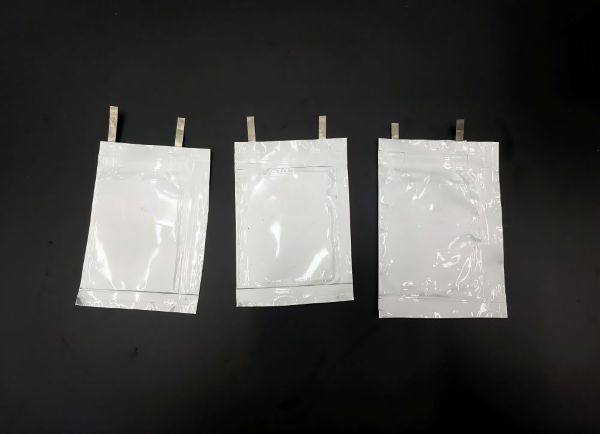
Magnesium pouch cells made by CINESME
This technology has already passed pilot testing at Baosteel Metal, achieving benchmark hydrogen storage performance at the hundred-ton scale. The team is now developing a third-generation magnesium-based solid-state hydrogen system and a "solid hydrogen warehouse" to store green hydrogen and recycle industrial byproduct hydrogen.
The third IMA award went to ultra-large die-cast magnesium alloy structural components for vehicles, targeting the trillion-yuan smart new energy vehicle cluster. These parts—including an integrated vehicle body frame and a battery housing cover—were developed by Pan’s team in partnership with Baowu Magnesium and Meilishin. The mechanical performance of these parts matches that of aluminum alloy alternatives but with a 32% weight reduction. CINESME executive director Jingfeng Wang noted that the institute’s magnesium alloy chassis has successfully passed testing, drawing interest from multiple automakers. One such firm, SERES, is considering using a magnesium chassis for a new model. “If magnesium chassis enter mass production, they will simultaneously boost three sectors: equipment manufacturing, new energy vehicles, and new materials,” said Wang. Moreover, the manufacture of ultra-large magnesium structural parts requires specialized equipment. With this development rooted in Chongqing, it contributes not only to two trillion-yuan clusters—smart connected vehicles and advanced materials—but also to the 500-billion-yuan smart equipment and manufacturing cluster under the 33618 framework.
Today, NERCMA leads the world in many magnesium technologies. It plays a key role in setting international standards and contributes to global organizations and journals. The three IMA awards have further elevated Chongqing’s global influence in the magnesium sector. For example, Journal of Magnesium Alloys, founded by Pan, now boasts an SCI impact factor of 15.8 and was again selected for the China Science and Technology Journal Excellence Action Plan in 2024. That same year, Chongqing hosted the 8th International Conference on Magnesium (ICM8) and the 13th International Conference on Magnesium Alloys and Their Applications (Mg2024), attracting experts from around the globe.
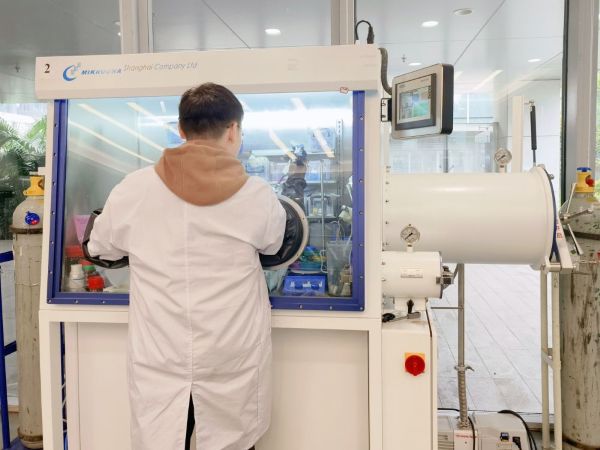
A researcher is assembling Magnesium batteries in the lab of CINESME
“CQU and NERCMA provide top-tier expertise, while CINESME and the Mingyue Lake Lab offer platforms that bridge the ‘valley of death’ between technology and industrialization,” said Wang. To date, CINESME houses 32 high-end teams, more than 280 researchers, and several enterprise partners. Its technology development efforts are progressing steadily.
With strong projects, talent, platforms, and international influence, how will CINESME continue to drive Chongqing’s advanced materials industry forward? Wang said the next step is to follow a “Four-Generation R&D Strategy”: producing one generation, developing another, pre-researching the third, and exploring a fourth. CINESME will focus on emerging fields such as next-gen energy storage materials, lightweight structures, intelligent materials, materials big data, and interdisciplinary frontier materials—supporting traditional industry upgrades, expanding emerging sectors, and planning for future industries. The goal is to establish Chongqing as a world-class hub for innovation, talent, and industrialization in the materials field.

